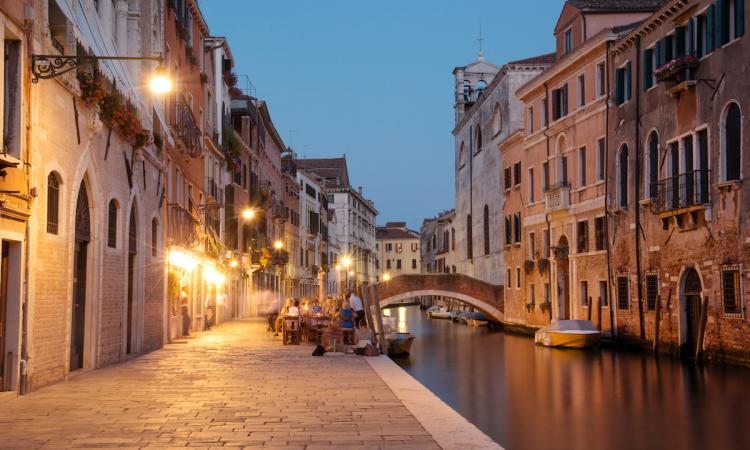
When it comes to sightseeing in Venice, off-the-beaten-path options are more than a bonus, they’re practically a necessity. The fabled city is more popular than ever, and only a 330 mile train ride from Rome, resulting in crowds and long line-ups at the more popular sights — particularly during Venice’s busiest seasons.
But there still remains a way to enjoy the unique charm of this historic city: visit Cannaregio, Venice’s largely unexplored, northeastern sestiere, or neighborhood.
Cannaregio, which extends north of the Grand Canal, features has many wonderful churches, calli (streets), and campi (literally “fields”, or what the rest of Italy now calls Piazzas) that are largely ignored by the majority of tourists. A stroll along Cannaregio’s quiet lanes reveals much of the authentic charm that first made Venice famous.
As you exit the Santa Lucia train station, hang back and let the crowds disperse, then saunter over to the Church of Santa Maria di Nazareth, located right next to the station. Not only is it the only church in Venice to be clothed in white Carrara marble (like Michelangelo’s David), its interior is a sumptuous example of the late Venetian Baroque style.
Continue deeper into Cannaregio and you will find the Ponte delle Guglie, or Bridge of Spires. Located just ahead of the point where the Grand Canal meets the Cannaregio Canal, this bridge leads to the Jewish Ghetto, the oldest of its kind.
Beginning in 1516, Venetian Jews were restricted to living in the ghetto. Access was controlled by two bridges, which were barred from sunset to dawn. In spite of this, the Jewish community thrived, with many working as successful merchants, doctors and bankers. This continued until 1797, when the French Army of Italy, commanded by a young general by the name of Napoleon Bonaparte, conquered Venice and ended the separation.

Venice’s Jewish Ghetto is divided into the Ghetto Nuovo (New Ghetto), and the adjacent Ghetto Vecchio (Old Ghetto), which is confusingly not as old as the Ghetto Nuevo. There are five synagogues, a museum, the Museo Ebraico, dedicated to the history of the Jews in Venice, and a bakery, the Panificio Volpe Giovanni where you can sample traditional Kosher pastries.
Nearby is the peaceful Campo di Sant’Alvise and its church, which was commissioned by Antonia Venier, daughter of the Doge Antonio Venier after Saint Louis appeared to her in a dream. In Venice, secrets often hide in plain sight, so don’t be fooled by the church’s humble Gothic facade. Its exterior is plain and unadorned, while its dazzling interior overflows with statues, marble altars and three masterworks by famed Venetian painter Tiepolo — including Christ Reaching the Calvary.
Another book that shouldn’t be judged by its cover is the church of Madonna dell’Orto, whose simple brick exterior conceals a magnificent interior and not one but ten large-scale works by Tintoretto, who lived nearby and whose tomb is located in the church itself. 2019 marks the 500th anniversary of his birth.
Conclude your relaxing stroll through hidden Venice at a famous landmark, the Ca’D’Oro, or golden house. It no longers sports its golden facade, and is now the Galleria Giorgio Franchetti. From here, plunge into the crowds around San Marco and the Rialto bridge, or continue exploring the picturesque tranquility of your new favourite sestiere, Cannaregio.
What are you waiting for? Book your tickets now!


